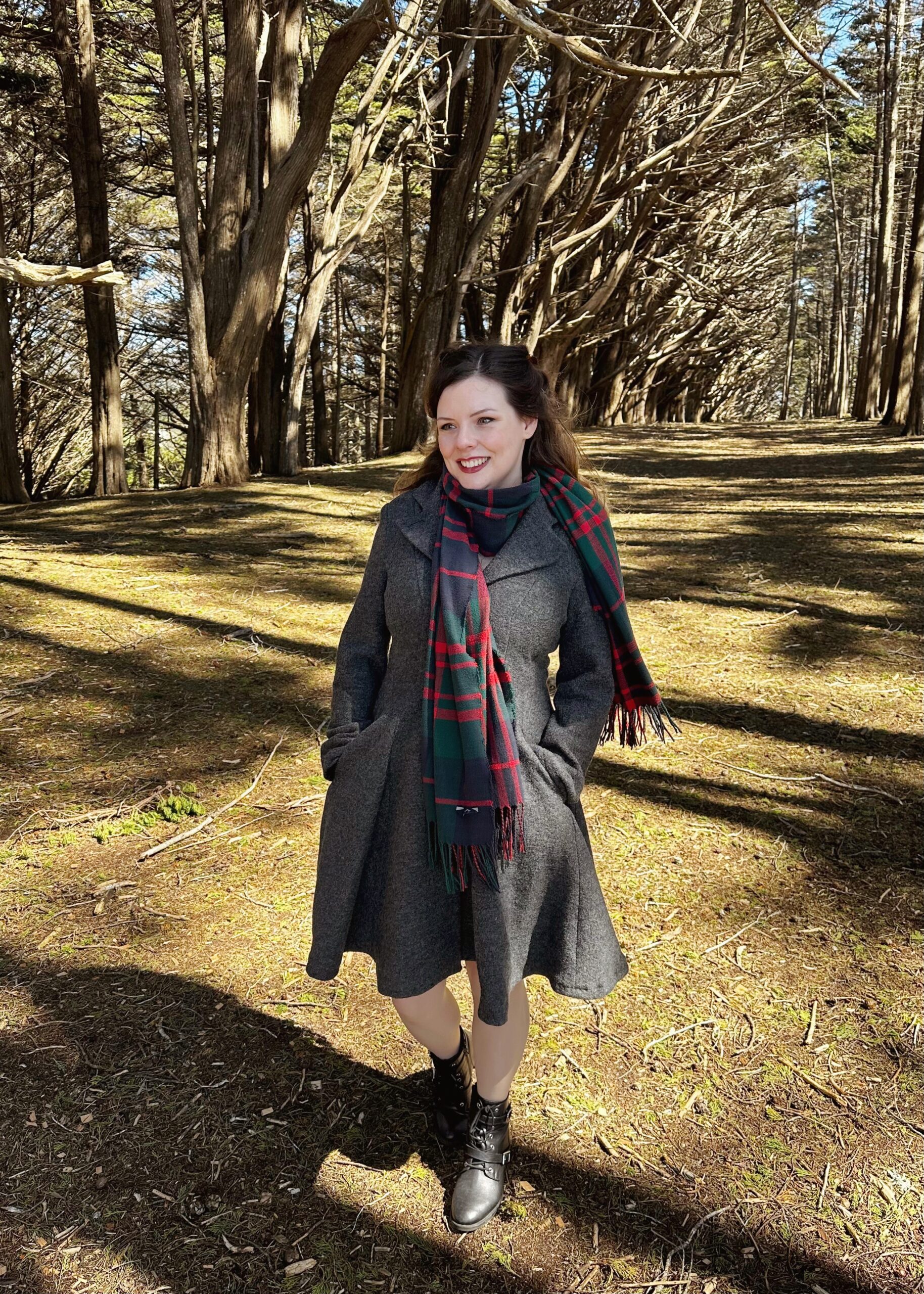
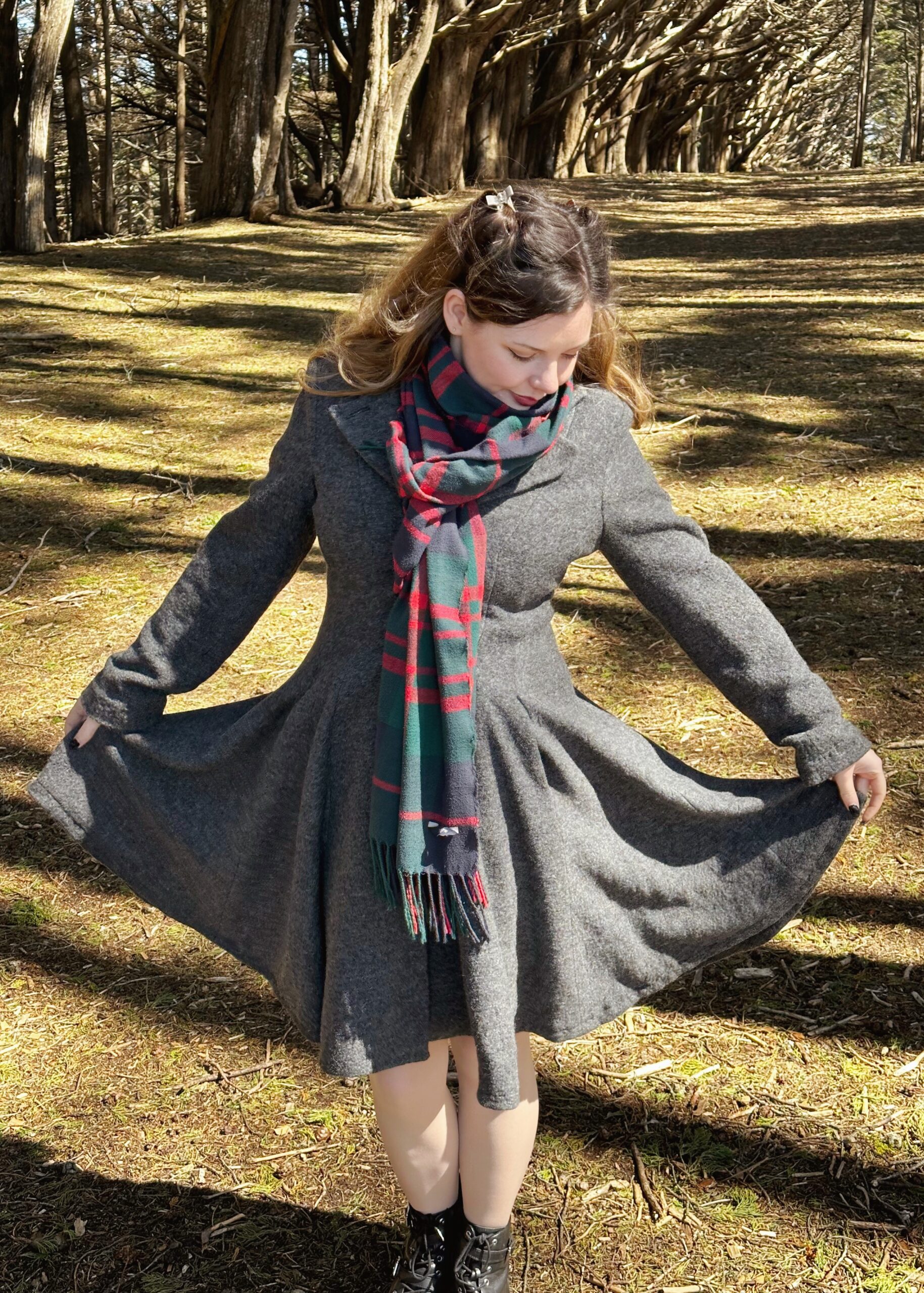
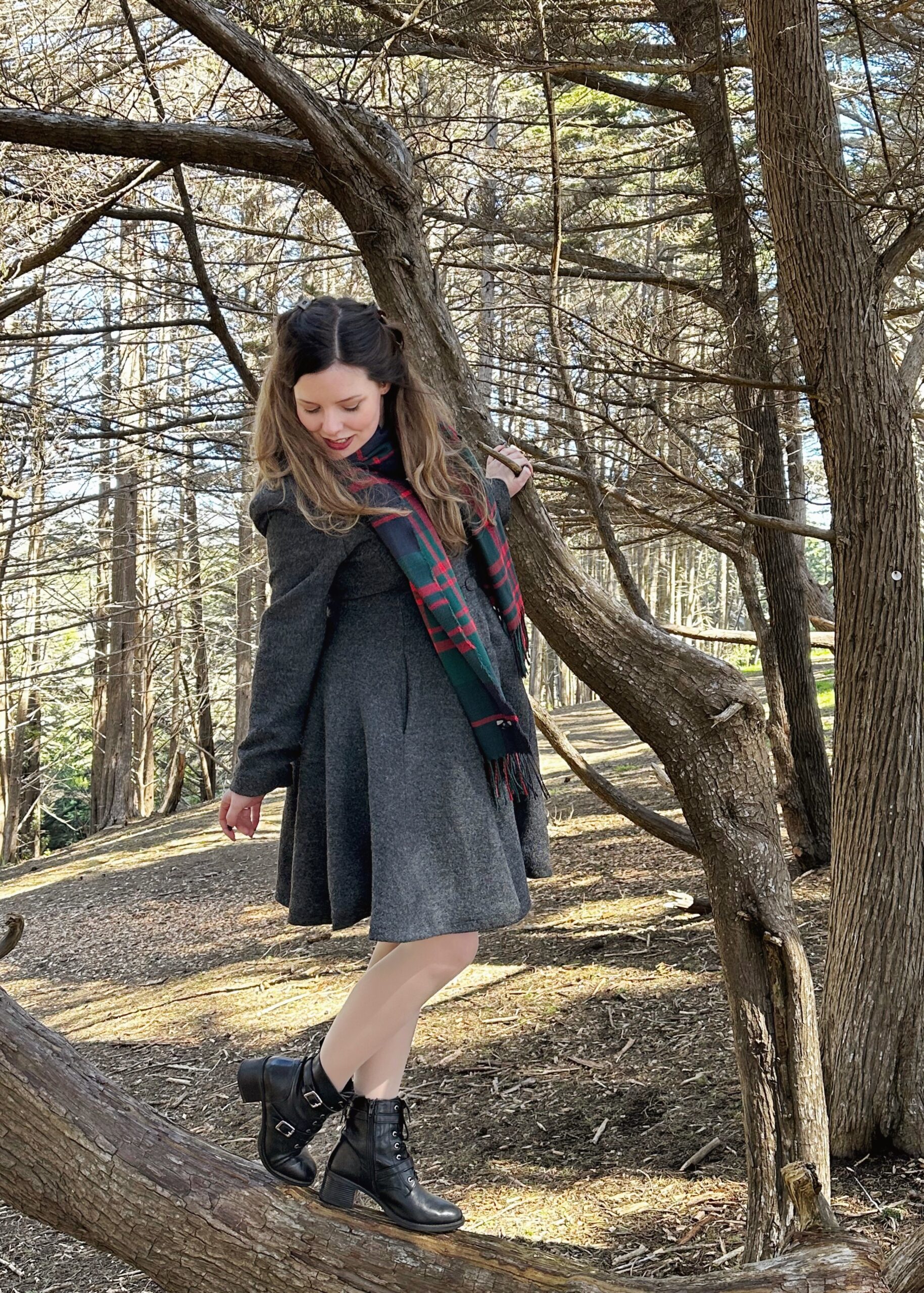
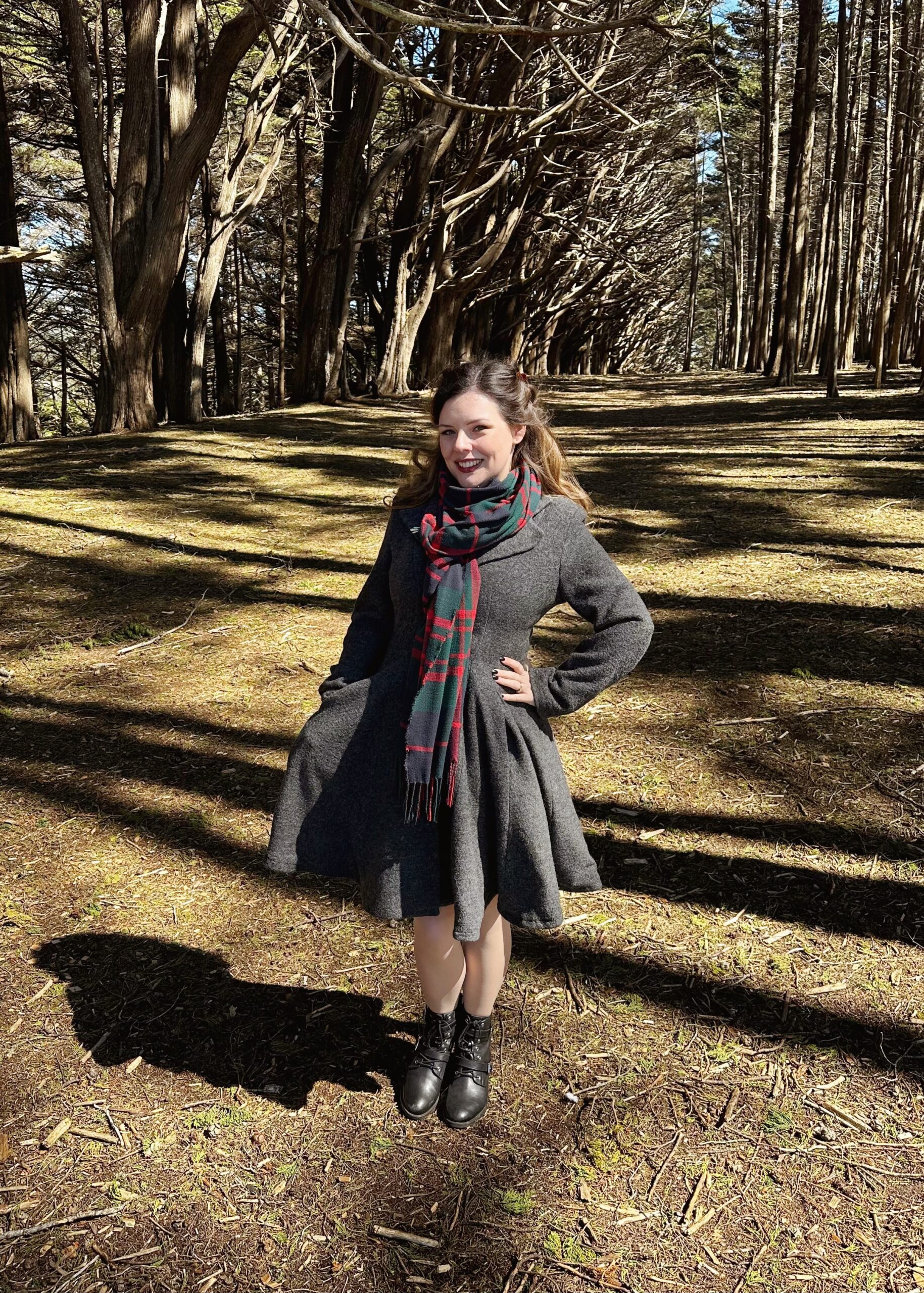

One of my genuine pet hates in winter is wearing one of my usual circle skirts and then having it smooshed under my narrow-cut, single-breasted coat. I just hate it! I hate how the skirt bunches up unevenly, I hate how it moves as I walk, I hate how it looks. I will usually then reach for my hip-length peacoat instead, and then waver… because I hate being cold the most of all.
So it was high time to venture into the world of making a coat; in particular, a coat that would be warm and cosy, at least knee-length, made from wool and fully lined, and – most importantly – gloriously twirly. Head over to Minerva to read my post, or scroll down for more photos and details!
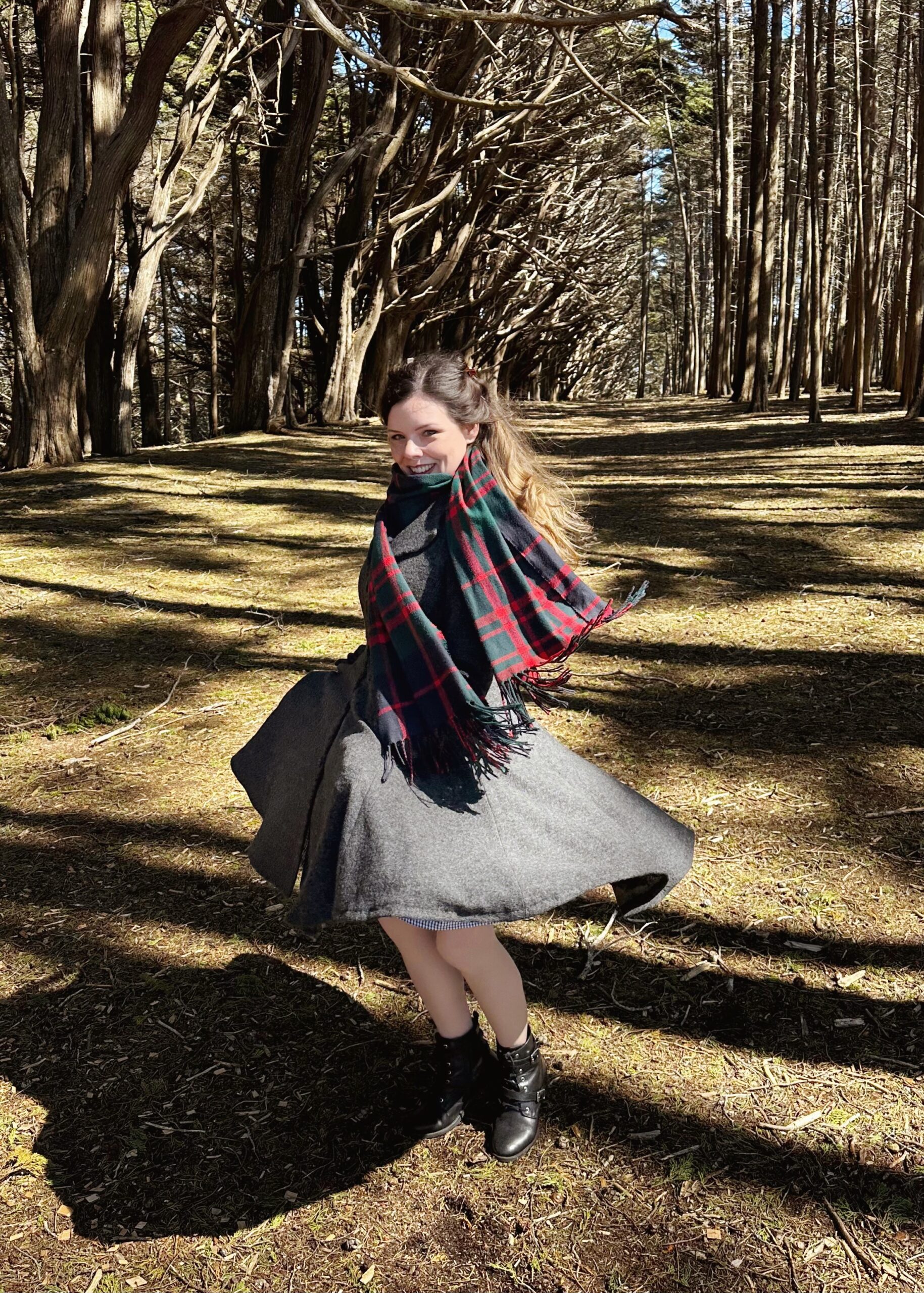

Can you tell I am delighted? I am so thrilled with the fact that I made this coat!, and I know I will get lots of wear out of it in autumn and winter (and also right now — what is up with this late April cold snap we are having here in Oxford?!).
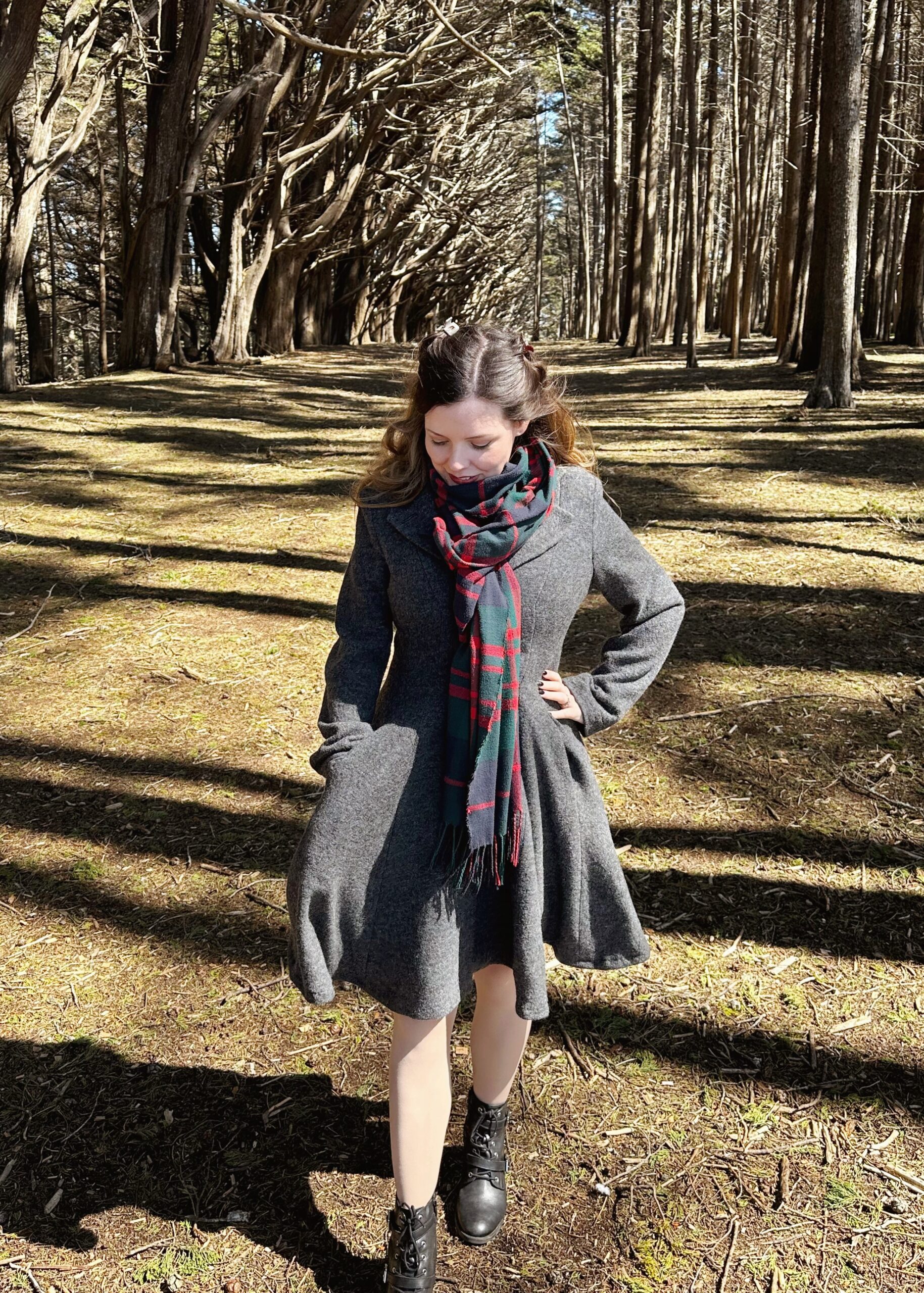

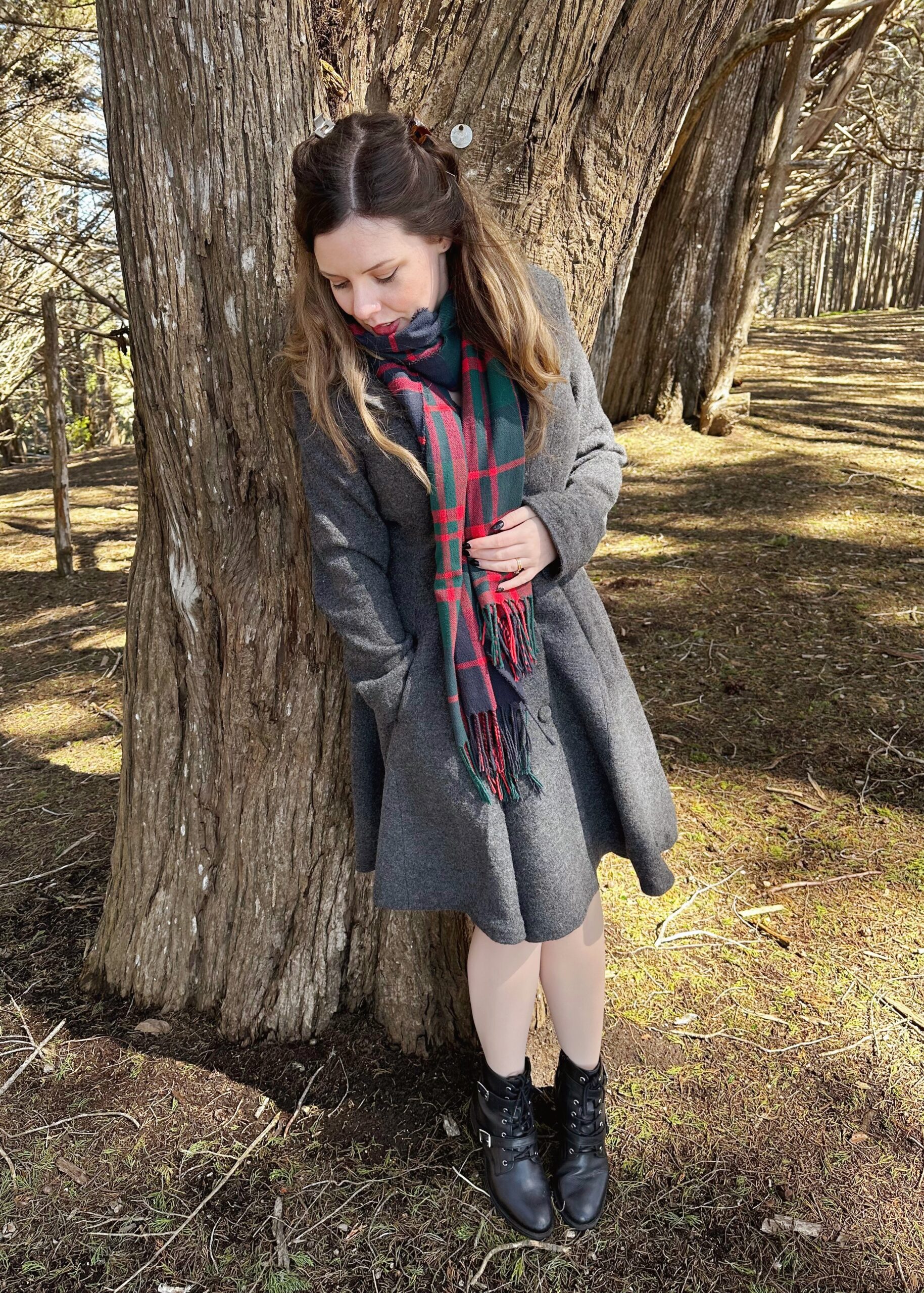
Minerva very kindly sent me 4.5m of this boiled wool/viscose coating blend as part of their Minerva Brand Ambassador program; I knew I wanted wool for this project, as wool has natural antibacterial and antimicrobial properties, and it is breathable and warm. Hey, it is a classic outerwear fabric for a reason! 😊 As I am usually wearing something bright and colourful in winter, I opted for this gorgeous charcoal grey shade, so it wouldn’t end up clashing with multiple items in my wardrobe. It is a deceptively thick fabric, and surprisingly weighty once it was sewed up. There is a little width-way stretch to this fabric, which provides additional wearing comfort. My finished coat is super cosy, and I love the drape and movement of this fabric. It was incredibly easy to handle too, especially when cutting out — I found it to be very stable, and the thickness didn’t make my sewing machine complain either. I didn’t pre-wash this fabric, but instead prepped by pre-shrinking the wool with my garment steamer. I did find that none of my usual marking tools (Frixion pen, chalk, water-soluble pen) showed up on this fabric, so I instead used tailors tacks for marking dots and notches. The wool was a total dream to press, but using a tailors clapper made the world of difference to the seams — it is such a worthwhile investment if you are making a coat.
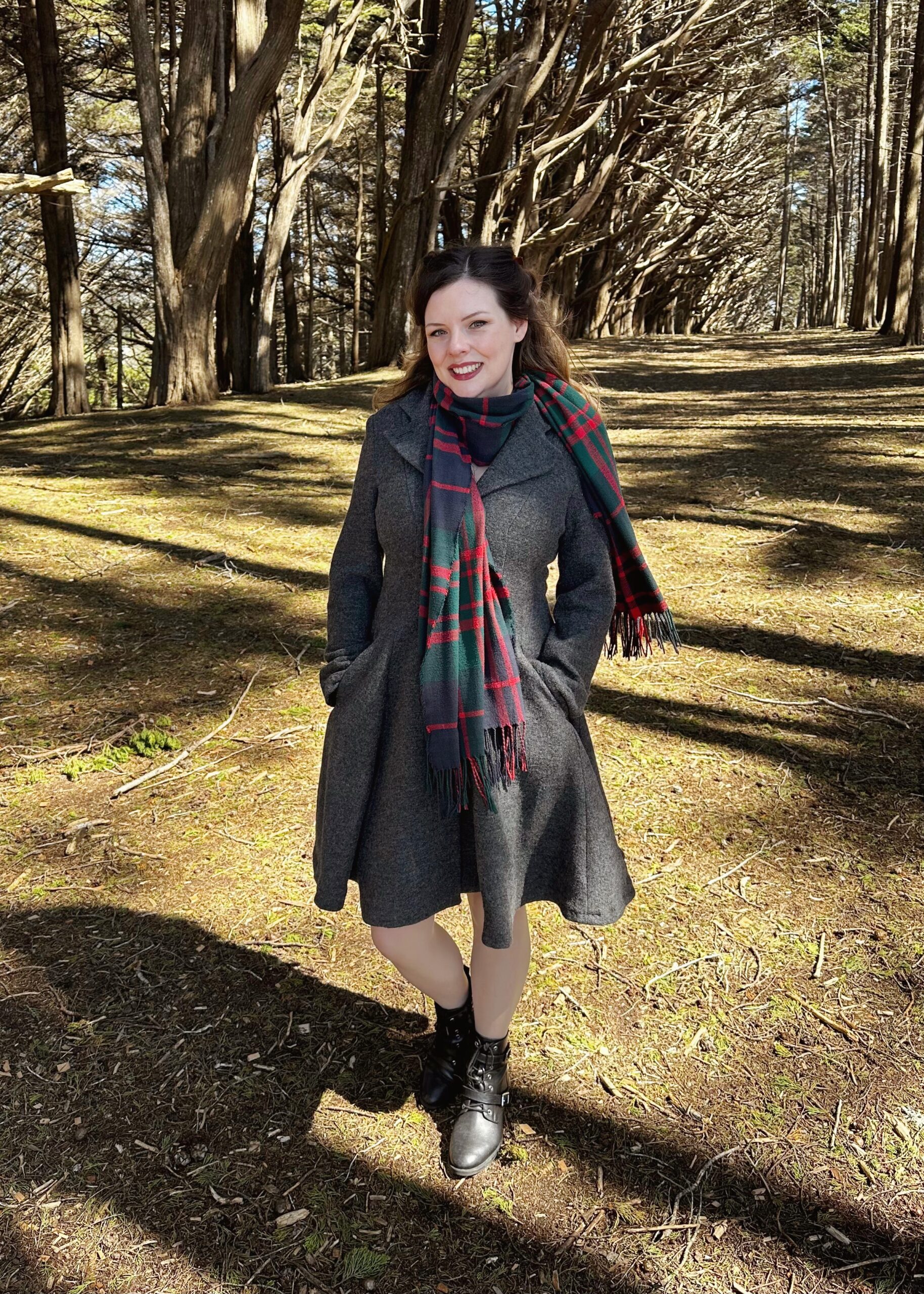
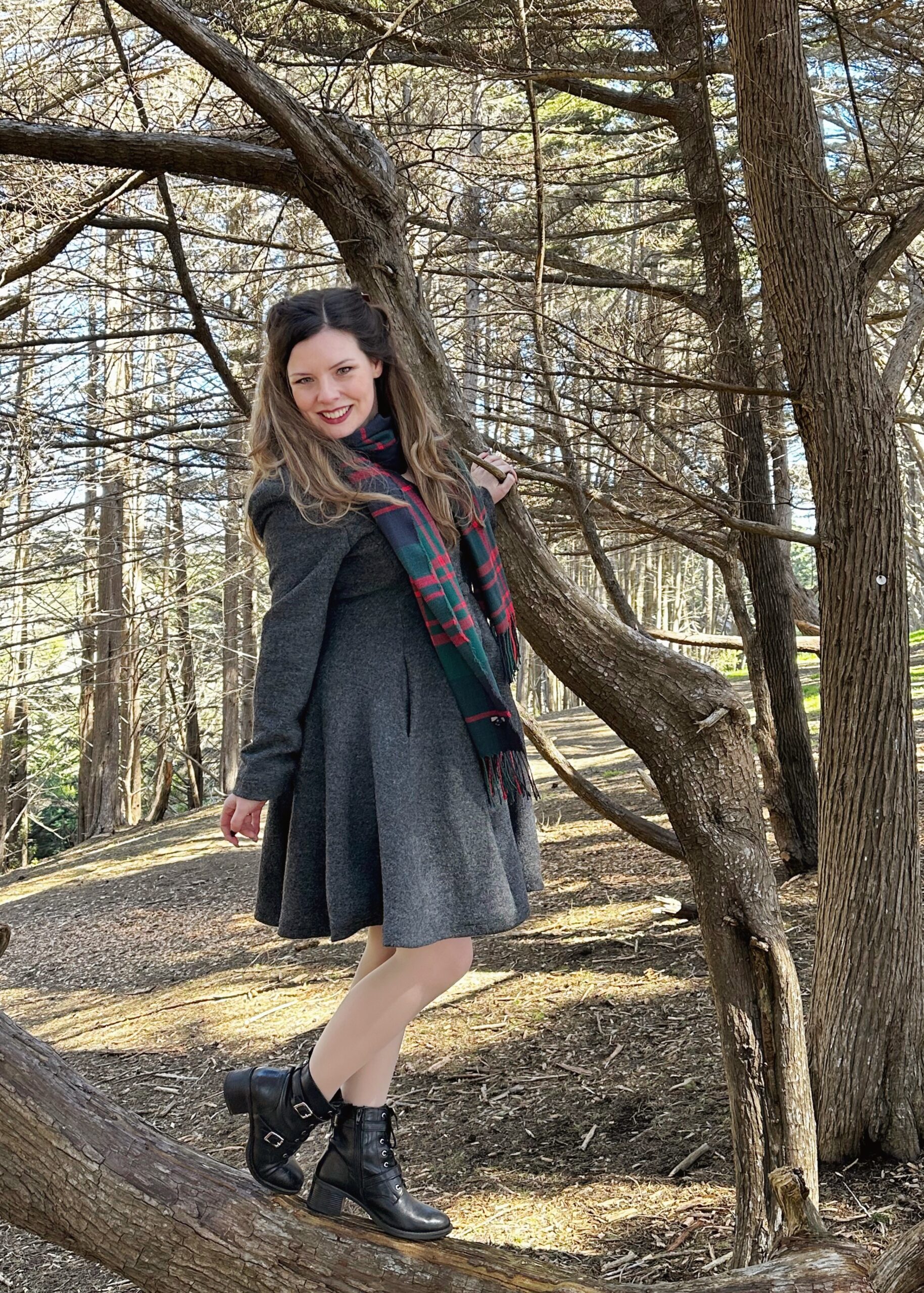
I was pretty much sold immediately on McCalls 6800, as it ticked the major box I was looking for: a full-skirted, lined coat pattern. There are four different views, with the collar designs or hem lengths as the main differentiating factor. I ‘frankensteined’ the notched collar of View B onto the straight hem length of View D, as I prefer open necklines on coats when wearing a scarf. I made up a straight size 12, with no fitting modifications, and found the instructions very easy to follow for a total novice of coat-making.
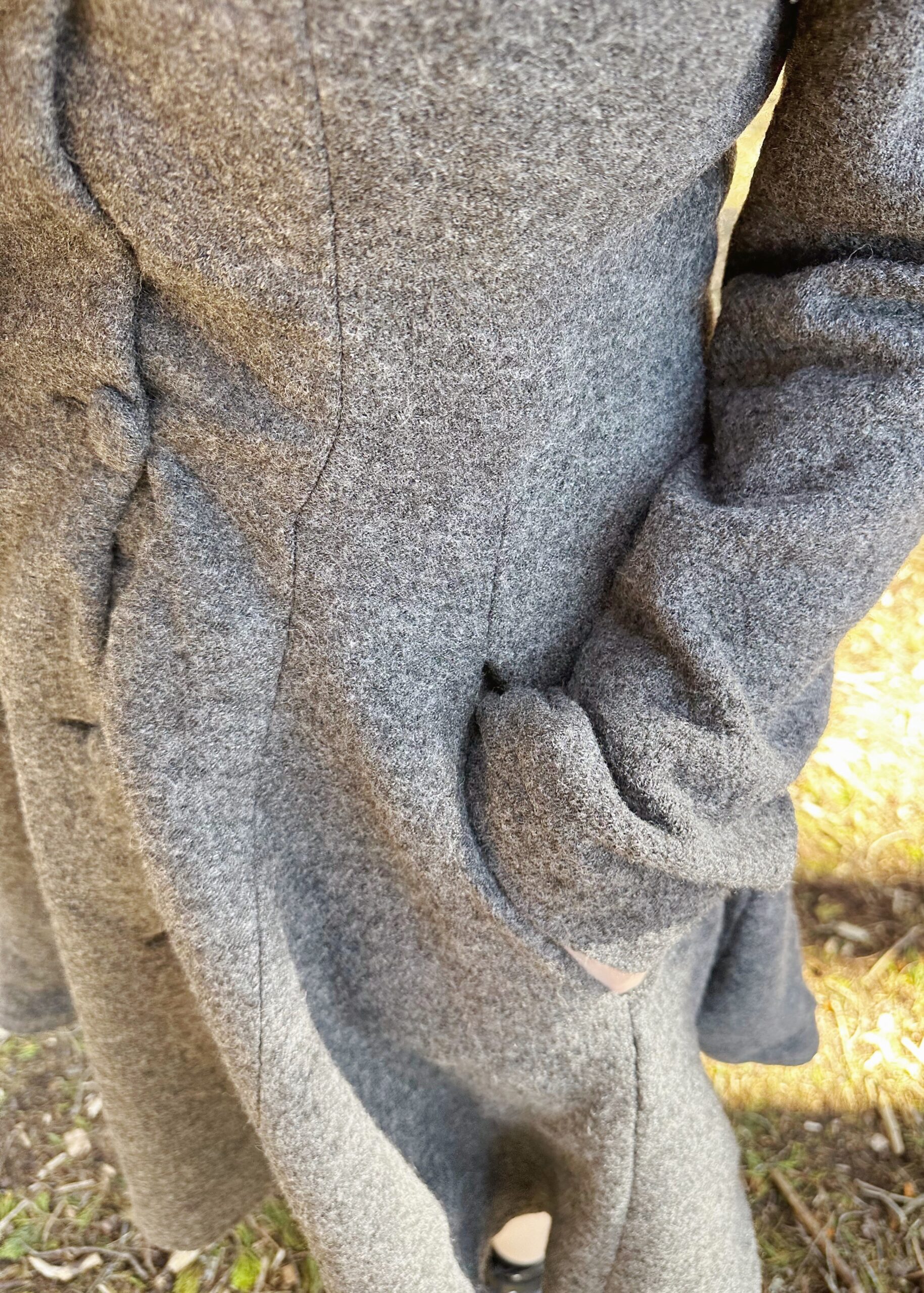


As only the wool fabric was supplied to me, I wanted to find a high-quality, affordable lining fabric that would add a bit of pizazz to this plain grey coat. I am a big believer of adding fun linings to projects as a secret bit of opulence, like a love letter to yourself! It is important for a coat lining to have a slippery, shiny fabric hand (so that you can easily slide your arms into the sleeves) and to be fairly lightweight (so you don’t add unnecessary bulk), so I started hunting on Fabworks. I landed on a viscose/acetate jacquard twill in a peridot and gold colourway; acetate has the sheen, the drape and the cool, silky feel that makes a perfect lining. The jacquard woven design of mythological symbols is luxe and pretty unusual — there is an owl and books to symbolise wisdom, an hourglass to symbolise time, and musical instruments and artists palettes to symbolise the arts.
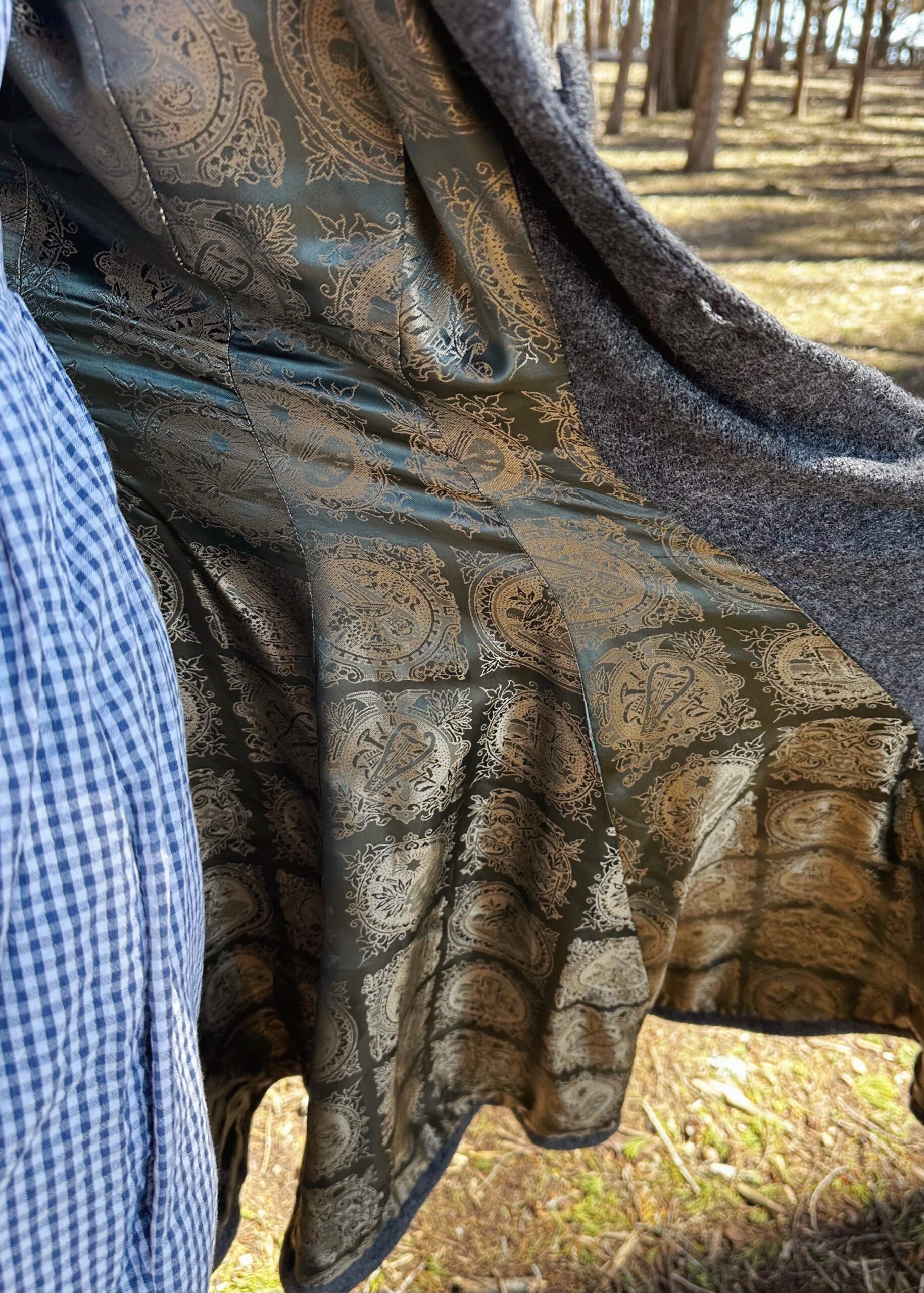
I chose to interface from the waistline up the entire back section, with a heavyweight fusible canvas, in order to give the coat some more structure. I also bought some small felt shoulder pads and a metal coat hanger chain from The New Craft House, and added one of my own labels.

I found that using extra strong thread with a needle with a large eye worked really well in creating hard-wearing seams on the wool (I used normal polyester thread for the bobbin). I considered making bound buttonholes, but my practice tries were highly unsuccessful! Luckily, my machine was fine going through multiple layers of thick, interfaced wool to make normal buttonholes 😊 I had a minor disaster in an attempt to ‘bag out’ the lining; I hadn’t realised how much the bias had dropped, and the hem was truly atrocious looking. I quickly unpicked, levelled the hem, and stitched it in place — although next time, I will definitely use a blind hem, to keep everything looking neat.


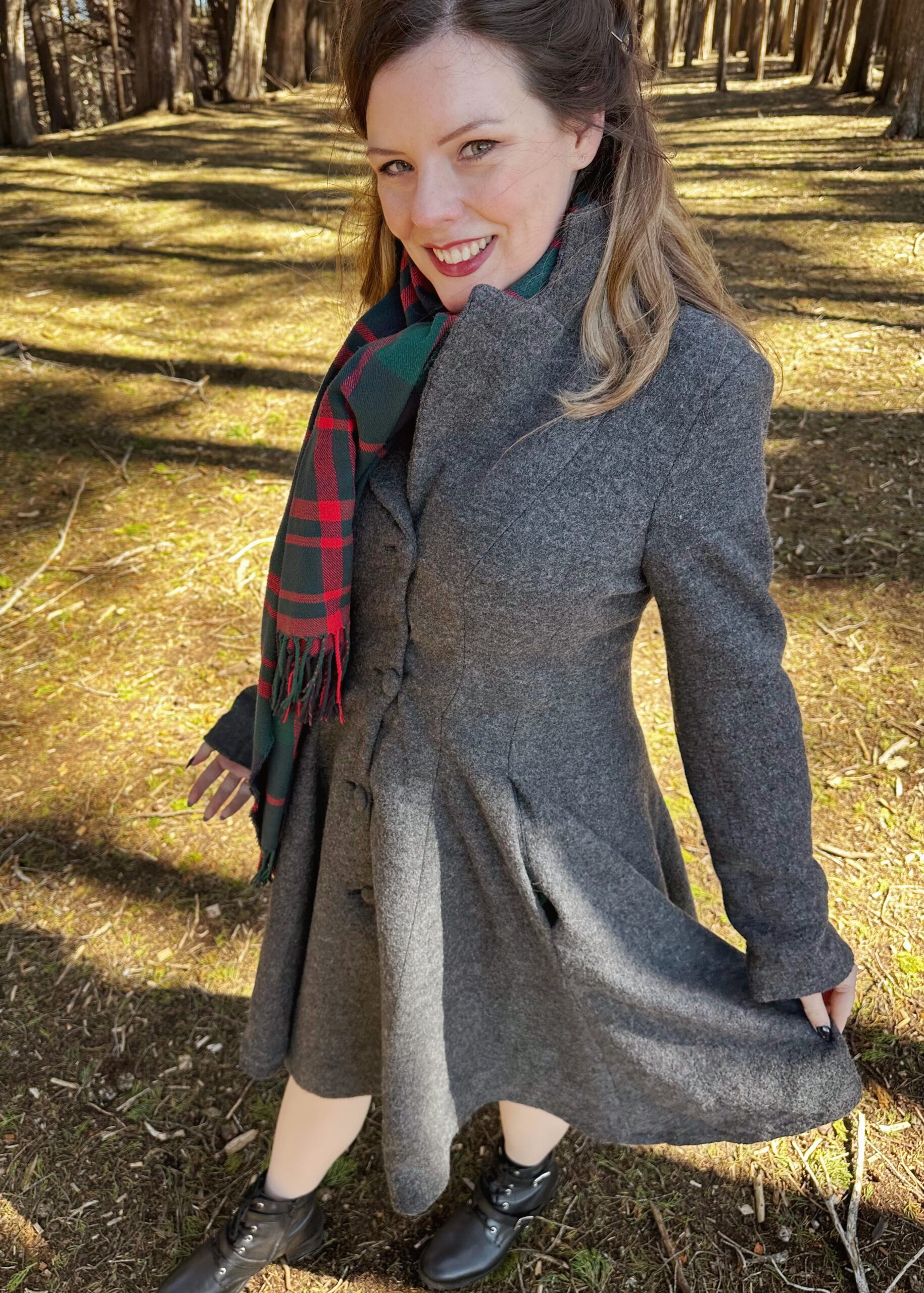
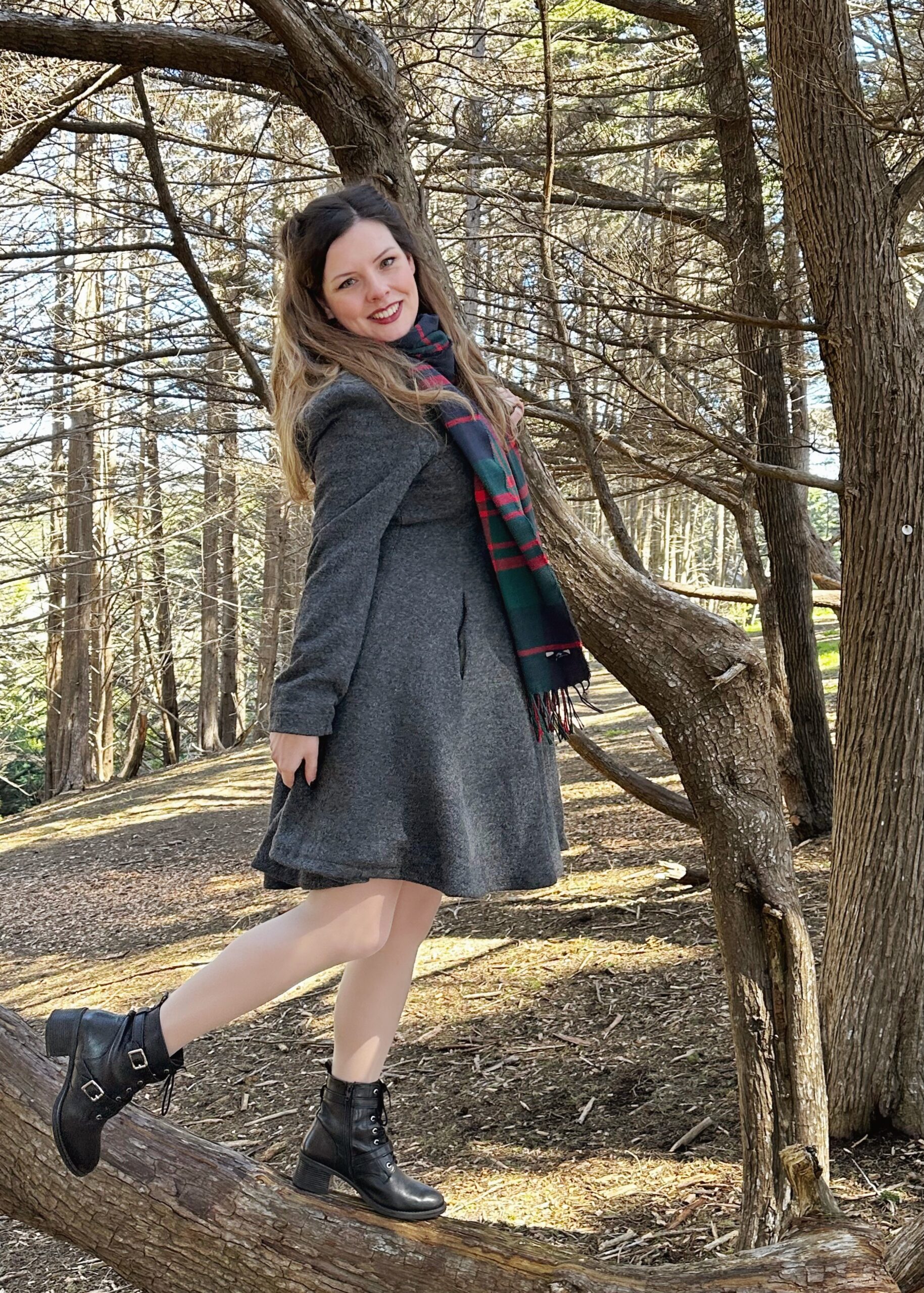
Embarking on such a big project and for it to be successful is so rewarding. I honestly would have never imagined being able to sew something like this when I first started sewing three years ago, but my confidence has really grown with every garment I have made. I am surprised by how much I enjoyed the tailoring aspects of making a coat, and I now have a husband making some not-so-subtle hints for a jacket of his own! 😊
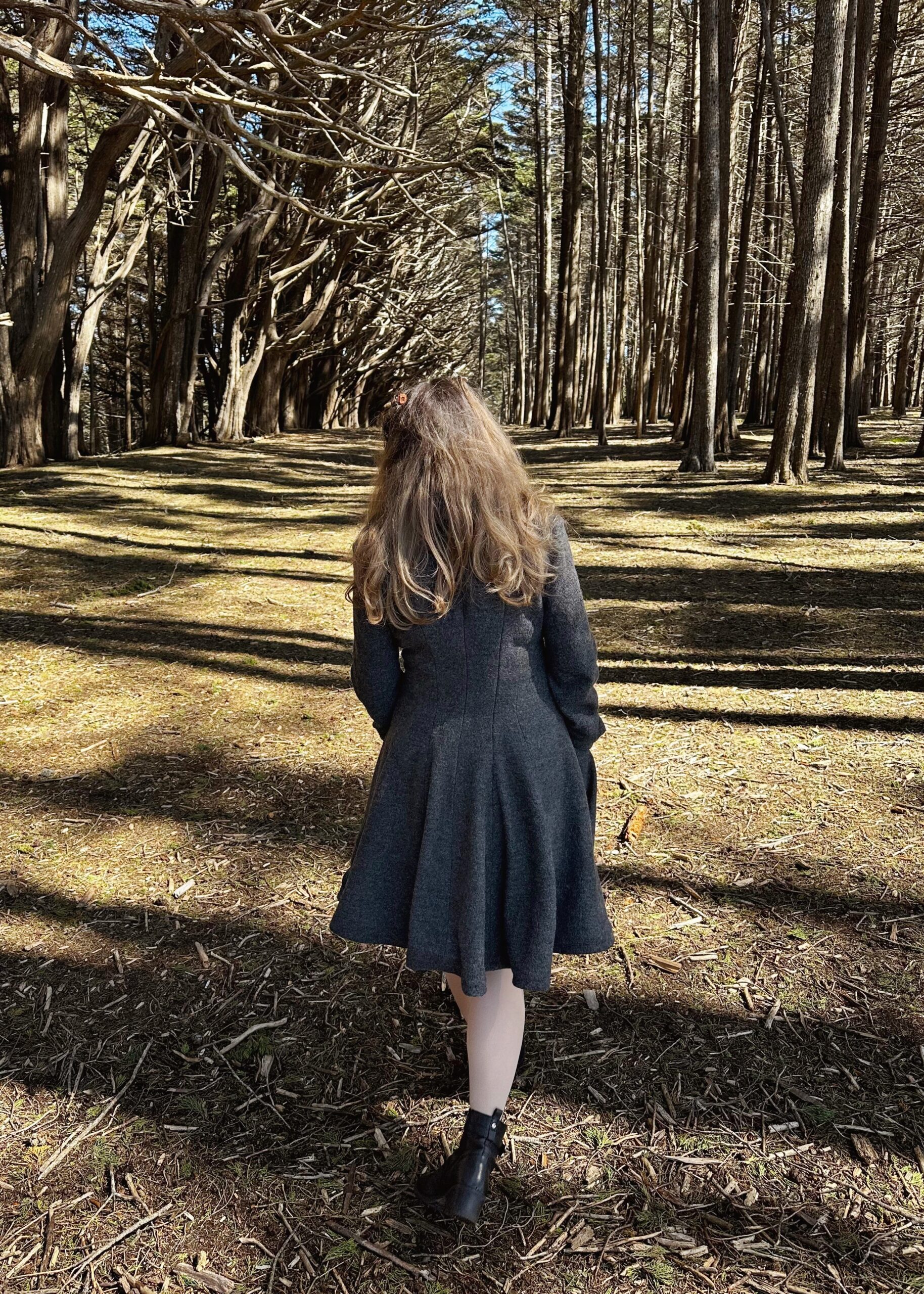
McCalls 6800 Coat
Size 6 – 22
Full Bust: 30.5″-44″
Waist: 23″-37″
Hips: 32.5″-46″



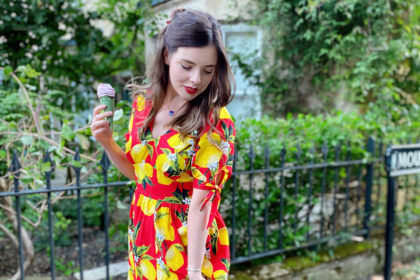
Oh my gaaawwwdd it’s beautiful. You know that thing where you find money in your winter coat pocket after months? This coat IS the money. And the covered buttons are a perfect touch!
Awww, Lia — thank you so much! 💕 This comment has made me smile so much!
bonjour, je voudrais faire ce manteau mais je ne comprends pas les taille, vous l’avez fait en taille 12, quel est votre taille “normal” pour avoir une idée de la différence de taille, le manteau est magnifique, merci de votre aide
Merci 💕 J’ai répondu à ton message! Bonne chance avec ton manteau 😊